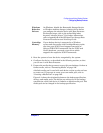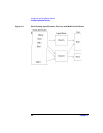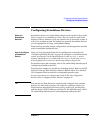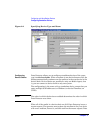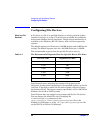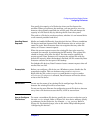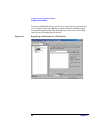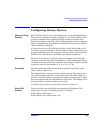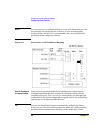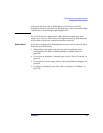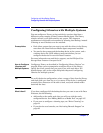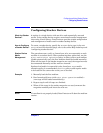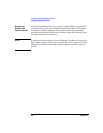
Configuring and Using Backup Devices
Configuring Library Devices
Chapter 2 29
Configuring Library Devices
What Are Library
Devices?
SCSI-II library devices, also called autoloaders, are large backup devices.
They contain a number of media cartridges in a device’s repository and
can have multiple drives handling multiple media at the same time.
Most library devices also allow you to configure automatic drive cleaning,
which is performed by Data Protector when the drive gets dirty. Refer to
“Drive Cleaning” on page 61.
A library device has a SCSI ID for each drive in the device, and one for
the library robotic mechanism. This mechanism moves media from slots
to drives and back again. For example, a library with four drives has five
SCSI IDs, four for the drives and one for the robotic mechanism.
Slot Number Each slot in the device’s repository holds one medium. Data Protector
assigns a number to each slot, starting from 1. When managing a library,
you refer to the slots using their numbers. For example, a library with 48
repository slots has slot numbers 1, 2, 3, 4, 5, 6...47, 48.
Drive Index The drive index identifies the mechanical position of the drive in the
library. Refer to Figure 2-4.
The index number is relevant for the robotics control. The robot knows
only index numbers and has no information about the SCSI address of
the drive. The drive index is a sequential integer (starting from 1) which
has to be coupled with the SCSI address of this drive. For example, for a
four-drive library, the drive indexes are 1,2,3,4.
If you have only one drive in the library, the drive index is 1.
Drive SCSI
Address
The drive index must match the corresponding SCSI address. This
means that you need to configure the pairs as follows:
SCSI address_A for index 1,
SCSI address_B for index 2, and so on.



